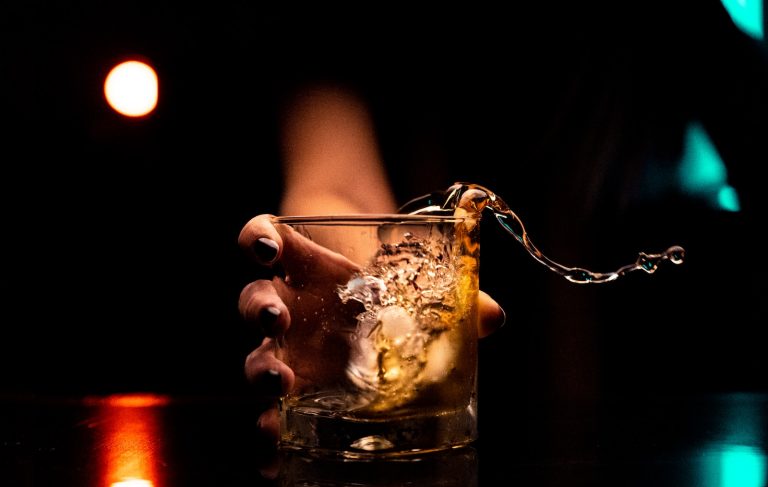Traditionally, whiskey has been seen as a middle-class or upper-class, white man’s drink. It was a sign of sophistication and brought forward the aesthetic of wooden desks, mountains of books, and a gentlemen’s club.
However, in recent years a new demographic has become the majority buying this beverage – Millennial or Gen z women.
Story Stages
The Stats – Survey One
Amazinggraceldn.com, a leading UK hospitality brand, has conducted a survey of over 2,000 UK whiskey drinkers to uncover the latest trends and insights. People under 35 have become the majority buyers, according to their findings.
Those under 35 took up 62% of the surveyed individuals. 60% were men, while 40% were women.
When asked how they drank their cocktails 70% stated through cocktails. However, this doesn’t mean the classic and rich flavors of whiskeys have been destroyed through added sweeteners. The most commonly enjoyed whiskey cocktail was the Old Fashioned.
Sammie Ellard-King, the owner of Amazing Grace, commented on the survey saying: “It’s great to see whiskey becoming more popular among a younger generation of drinkers. As a hospitality brand, we have seen a significant increase in demand for whiskey-based cocktails, and we are excited to see how this trend will continue to evolve in the coming years.”
The Stats – Survey Two
One survey doesn’t suggest a true change though. We need multiple to show that the results aren’t outliers.
The next survey we have sourced comes from NOP. Their data looked at multiple factors and showed that the majority of whiskey drinkers were either older than 55, or younger than 26.
The group that didn’t drink a substantial amount of whiskey was between 26 and 34 years old.
This shows that Millennials are not captivated by whiskey, while Generation Z has found a new interest.
The survey also showed that most young adults have bought whiskey to share or serve at home. 40% of young adults fell into this category, while 30% would drink whiskey at a bar, and the remaining 30% included a mixture of festivals, being bought the drink, or more unusual areas.
This shows that drinking whiskey isn’t part of the nightlife culture. Instead, it is still considered a community experience.
Shockingly, women take up nearly half of the percentage of whiskey buyers. Again this shows a shift in demographics. Normally middle-aged men would take up the vast majority of this figure, but now Generation Z women are a significant part of the population.
What Has Caused The Change?
So what has caused this change? Whiskey hasn’t changed demographics in decades, even centuries, so what has kick-started younger generations and women into purchasing this beverage?
Appreciation For Heritage
Climate change, history, and connecting to your roots have become an important part of Generation Z’s and Millennials’ lifestyles.
Whiskey already has an air of rich history, evoking images of grand masons and tweed suits. However, whiskey is one of the oldest alcoholic beverages created in Britain. Scotch whiskey, for example, has to be distilled and matured in Scotland to be given the name.
If you travel to Scottish towns and cities you would see large buildings and cultural connections to whiskey’s creation. For example, in Edinburgh, you can go to the Scotch Whisky Museum or explore the whiskey tour.
Whiskey has a connection to the land, the people, and the history of Scotland. This rich heritage isn’t lost on the younger generation who find worth in rustic methods.
Appreciation For Credibility
Most Generation Zers don’t care for drunken nights out. In fact, 20% of this generation (of drinking age) forgo alcohol, while another 20% drink far less than their Millennial counterparts at the same age.
Binge drinking is going out of style. However, instead of rejecting all alcoholic beverages, many of this generation prefer to appreciate fine wines, rich whiskeys, and delicate cocktails.
Drinking is about appreciating flavors and craftsmanship instead of getting drunk. People of this generation care for the credibility of their products too. This means old and respectable names are chosen more often than cheap and flashy brands.
What Does This Mean For Whiskey’s Future?
Upon hearing that younger generations are enjoying whiskey, do not create a “young person aesthetic” brand change. This will remove the credibility and prestige of the whiskey, which is what this generation enjoys.
Instead, the whiskey industry should lean into the interests of this generation. Speak about their sustainability, their low environmental impact, and the history of the business.
This will keep the younger generation interested, without pushing away the older generation.
Final Thoughts
Whiskey is back in fashion, and as long as brands don’t change their ways too dramatically, it seems like this beverage will become a household favorite once more.
